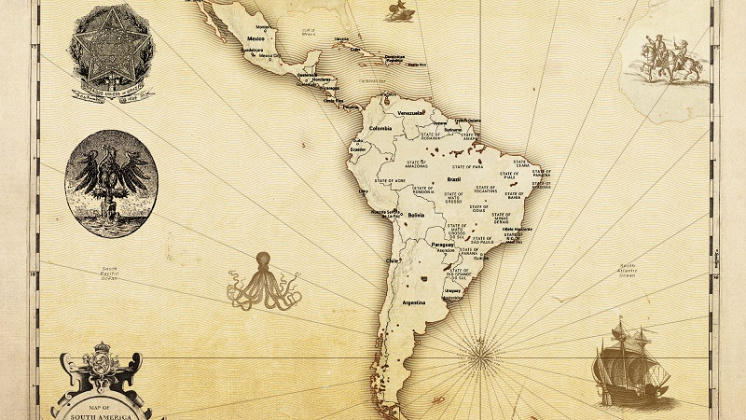South America between Retrocession & Development
If the stage for South America were that of the frame of a totally open economy, the surpluses of industrial production of the most diverse parts of the orb –naturally or artificially produced- will be dumped onto the South American market, amongst others, and they will end up destroying the industrial park of Argentina-Brazil and, in that same way, throwing large groups of the population into unemployment. For countries like Venezuela, Peru or Colombia, the irruption of the surpluses of global industrial production would inhibit any attempt of industrial development but, for countries like Argentina and Brazil, an uncontained irruption of these surpluses of production, by provoking the annihilation of their industrial parks, would mean a catastrophic set back to the condition these countries held until 1930: that of producers of raw materials and agricultural non-manufactured products and importers of goods and services with better technology. In synthesis, going back to occupying the post that Adam Smith had assigned them in the international division of labor.
Such a setback would not only be incompatible with the sustainment of the current populations of both countries but it would also be incompatible with the preservation of their democratic regimes. The devastation of the Argentine-Brazilian industrial park would mean, therefore, the annihilation of democracy and social hecatomb, a situation that could lead to a process of territorial fragmentation similar to the one lived by the Union of Soviet Socialist Republics with the implosion of the socialist system.
This fragmentation process that, above all in the case of Brazil, might not only be well looked upon by the hegemonic structures of world power but also might be well received on behalf of these important exogenous stimuli. After this eventual social hecatomb, Brazil could end up fragmented into several States. Something like an American “civil war”, but with an inverse result: those regions whose primary production is more important would fall with ease into the temptation of adopting a primarily exporting model and would break loose from the “inefficient” industry and bureaucracies of the rest of the country.
Very on the contrary, if the countries of South America are able to construct an effective “South American Union of Nations” by mid-decade of 2020, that would take them to the implementation of a common economic-diplomatic-military program, they would then be in a condition to negotiate with the rest of the powers, thirsty for raw materials, the possibility of them accepting that the South American community carry out an active pro-industrial policy that will have to be extremely selective so that it will be acknowledged by the international hegemonic structures of power.
Through an active pro-industrial-technological policy, the countries of South America would moderately open up their economies to the industrial production of the rest of the planet. It will not have to do with taking the idea of autarchy to a South American level but rather with determining the productive sectors to safeguard in order to maintain an industrial structure in accordance with the sustenance of the population of South American countries avoiding in that way the possibility of mass unemployment that would inexorably take them, as we have already shown –above all in the cases of Argentina and Brazil-, to a social crisis incompatible with the preservation of their democratic regimes and their respective territorial and national unities.
In exchange, if the stage is one of a “Union of South American Nations”, that is able to establish a diplomatic program in common and a like policy before foreign investment, they could be able to avoid foreign investment from aiming at the achievement of predatory extractive activities that are incompatible with the sustainable development that South American societies need.


